- UMA-JIRUSHI
- See ‘Daimyo flags 1) and its following notes.
- UNCASE(D)
- 1) (v) To remove a regimental, unit, service or national colour (or occasionally a parade flag),
usually with the appropriate ceremony, from its protective case (see also
‘case(d)’ and dislodging).
2) (adj) The term used when a regimental, unit or national colour (or occasionally a
parade flag) has been removed from its case (see also
‘parade flag 2)’ and ‘unfurl(ed)’).
- UNDEFACED
- (adj) The term used to describe a flag which may (and sometimes does) carry
authorized additions, but in this case is seen without any such additions (see also
‘archivexillum’,
‘blue ensign’,
‘defaced’ and
‘red ensign’).
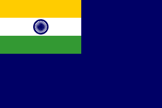
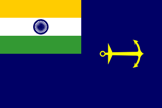
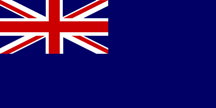
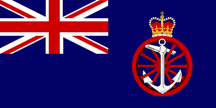
From left: Undefaced - Reserve Ensign, India; Defaced -
former Government Ensign, India (fotw); Undefaced Reserve Ensign, UK, Defaced
Department of Transport, UK (fotw)
- UNDY (or UNDE or UNDULATING)
- See ‘wavy’ (also ‘nebuly’).
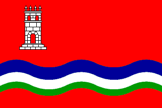
Flag of L’Aldea, Spain (fotw)
- UNEQUAL TRIBAND (or UNEVEN TRIBAND)
- A term that may be used when a triband is composed of stripes whose widths are not equal – but see
‘triband 1)’ and the note
below (also ‘Canadian pale’,
‘Spanish-style triband’
and ‘unequal tricolor’ below).
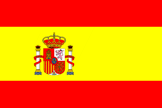

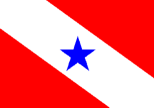
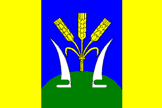
From left: National Flag of Spain (fotw); Civil Flag of
The Dniestr Republic (fotw);
Flag of Parα, Brazil (fotw); Flag of
Horka I, Czech Rep (fotw)
Please note that a triband having a single narrower stripe (as on those of the Dniestr Republic
and Parα illustrated above) may also be considered as a plain flag bearing such a stripe.
- UNEQUAL TRICOLOUR (or UNEVEN TRICOLOUR)
- A term that may be used when a tricolour is composed of stripes whose widths are not equal – but see
‘tricolour 1)’ and its note c) following (also ‘unequal triband’
above).

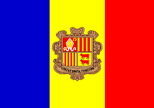
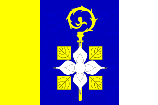
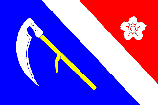
From left: National Flag of Colombia (fotw); National Flag of
Andorra (fotw); flag of Albrechtičky, Czech
Republic (fotw); Flag of Čechtνn, Czech Republic (fotw)
- UNFURL(ED)
- 1) (v & adj) Generically, to hoist, break out or show (or to have hoisted, broken out or shown) a flag (or flags) that have not been
displayed until that moment (see also ‘break a flag’ and
‘hoist 3)’).
- 2) (v & adj) To unwind (or to have completed the unwinding of) a colour or parade flag from its staff after it has been uncased
(see also ‘colour 2)’,
‘furl(ed)’,
‘parade flag 2)’ and
‘uncase(d)’).
- UNICOLOUR/UNICOLOURED (or UNICOLOUR/UNICOLORED)
- See ‘monocolour’.


National flag of Libya 1977 - 2011 (fotw);
Flag of Partido de la Sierra en Tobalina, Spain (fotw)
- UNION, THE
- 1) Specifically in US usage, the canton of the US national flag - i.e. 13 -
50 white stars on a blue field (see also ’stars and stripes’,
‘union jack 3)’
and ‘union mark’).
- 2) Generically, see ‘canton 2)’ (also union mark).
![[Jacks - US]](../images/v/vxt-d337a.gif)
Canton of the National Flag/Traditional Jack, US (fotw)
- UNION FLAG
- 1) Specifically in UK usage, a precise term for the British national flag when flown on
land – but see ‘union jack 1)’ and ‘union jack 2)’ below.
- 2) Generically, the term that may be used when a flag symbolizes the
political or economic union of two or more
previously independent countries – for example those of the United Arab Emirates or of
Malaysia, or that of the European Union (see also ‘union mark’).
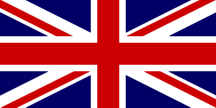
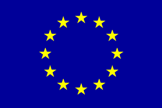
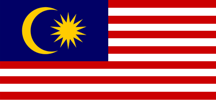
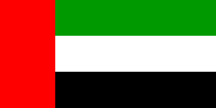
National Flag of the
United Kingdom
(fotw); National Flag of Malaysia (fotw); National Flag of the United Arab Emirates (fotw)
Please note with regard to 1) above and Union Jack 2), this flag (as
currently seen) is actually a distortion of the design approved in 1800 in which
the red and white saltires were of an even width with their fimbriation added (as
illustrated below).
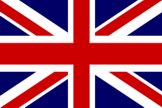
Union flag as authorized in 1800, UK (Zeljko Heimer)
- UNION JACK
- 1) A general and officially recognized term for the British national flag
whether flown on land or sea – but see ‘union flag 1)’ and ‘union jack 2)’ (also
(also
‘British flag’,
‘gore‘,
‘great union‘,
‘interlaced’,
‘James union’,
‘national flag’,
St Andrew's Cross 2),
St George's Cross 2),
St Patrick's Cross and
‘union mark’).
- 2) In UK usage, a precise term for the British national flag when flown as a jack from the bows of a British
warship, from a yardarm to signal that a court martial is being held, or at the main masthead
as the command flag of an Admiral of the Fleet - see ‘union flag 1)’ (see also
‘flag of command’, ‘His Majesty’s Jack’.
‘jack’ and ‘naval jack’ under
‘jack’,
‘masthead’
and ‘yardarm’).
- 3) In US usage, the official term for the traditional US national jack, which consists
of the union from the US national flag (see also ‘union, the’).
|
![[Jacks - United Kingdom]](../images/v/vxt-d337.gif)
National Flag of the United Kingdom (fotw)
|
![[Jacks - US]](../images/v/vxt-d337a.gif)
Traditional National Jack, US (fotw)
|
Notes
a) The British national flag is legally (when undefaced)
restricted to naval vessels whilst flown afloat (see also 'civil jack', 'government
jack' and 'naval jack' under 'jack',
'pilot jack' and
'undefaced').
b) US merchant vessels
are not forbidden by regulation to wear the union jack as described in 3) above,
but at the time of writing it has been temporarily replaced in naval usage by
the design shown below see rattlesnake.
![[current Union Jack - US]](../images/v/vxt-d339.gif)
Naval Jack in current use, US (Graham Bartram)
- UNION MARK
- A symbol expressing the unification of two or more territories - such as the
British Union Jack or the former Norwegian-Swedish Union Mark - either employed
alone or as a charge on a flag (see also ‘charge’,
‘conjoined’,
‘interlaced’,
‘union’, ‘union flag’ and
‘union jack’ above).
![[UK Union Jack]](../images/v/vxt-d2396.gif)
![[Norway-Sweden Union Mark]](../images/v/vxt-d2461.gif)
![[Norway-Sweden Union Mark]](../images/v/vxt-d341.gif)
![[Sweden merchant flag]](../images/v/vxt-d1003a.gif)
![[Norway merchant flag]](../images/v/vxt-d1003b.gif)
Union Jack 1606 1801, England/UK (fotw);
Red Ensign 1707 1801, England/UK (fotw);
Norway-Sweden Union Mark and Naval Jack 1844 – 1905 (fotw); National/Merchant Flag of Sweden 1844 – 1905 (fotw & CS); National/Merchant Flag of Norway 1844 – 1898 (fotw)
- UNION PENDANT (or PENNANT)
- 1. See ‘budgee pendant’.
2. A term originally used to also describe what later became the ordinary or common pendant see common pendant.
![[Union pendant]](../images/v/vxt-d1052.gif)
The Union/Budgee Pendant c1700, UK
- UNION STANDARD
- In British military usage, a term for one of three such standards each carried
by the Life Guards and the Blues and Royals - the Household cavalry - and the
equivalent of a normal cavalry guidon or infantry colour (see also
'colour 2)',
'colours 2)' and
‘guidon 2)’ and
sovereign's standard).
![[union standard]](../images/v/vxt-d498.gif)
Reverse of The Union Standard of the Blues and Royals, UK (householdcavalry info)
Please note that the Blues and Royals (unlike the Life Guards) also carry a guidon
in addition to the sovereigns and union standards due to their amalgamation with the
Royal Dragoons in 1969.
- UNIQUE FLAG (or UNIQUE EXAMPLE)
- A flag intended in design and usage, to be the only one of its type.
![[Unique Flag]](../images/v/vxt-d2727.gif)
Main Banner of German Athletics Union 1880 (fotw)
Please note that in East and Central European usage the ceremonial flag of
a community is often created as a unique flag – see
‘ceremonial flag 2)’.
- UNIT COLOUR (or COLOR)
- See ‘colour 2)’ and
‘colours 2).
![[Unit Flag]](../images/v/vxt-d1182.gif)
Unit Colour of the 2nd Army Corps, 2nd Support Brigade, Greece (fotw)
- UNIT DESIGNATION
- The inscription on a colour that indicates the military group to which it
belongs (see also ‘colour 2)’.
![[Unit Designation]](../images/v/vxt-d2367.gif)
Colour of the 103rd Field Artillery with Unit Designation, US (fotw)
- UNIT FLAG
- 1) See ‘camp flag.
- 2) See branch of service flag 2).
![[Unit Colour]](../images/v/vxt-d1466.gif)
![[Unit Colour]](../images/v/vxt-d1467.gif)
Unit/Camp Flag of The Royal Army Medical Corps, UK (Graham Bartram); Unit/Branch of Service Flag of
The Transportation Service, US (fotw)
- UNOFFICIAL FLAG
- A flag that has (or had) not been formally adopted by the relevant authority, but is (or has
been) exhibited by supporters or enthusiasts as representing a particular entity, institution or
cause, as opposed to a design or type which is so authorized or for which there is (or has been)
no authorized design see official flag 1)
(also de facto 2),
folk flag and
institutional flags (unofficial).
![[unofficial flag]](../images/v/vxt-d2944.gif)
![[unofficial flag]](../images/v/vxt-d2303.gif)
![[unofficial flag]](../images/v/vxt-d413.gif)
An Unofficial Flag of Guadeloupe, France (fotw); An Unofficial Scotch Union, Scotland c1610 (fotw); An Unofficial Flag Showing
16 Stars and 16 Stripes, US 1796 (fotw)
- UNREP (UNDERWAY REPLENISHMENT) FLAG
- See ‘battle flag 2)’.
![[unrep flag]](../images/v/vxt-d1123.gif)
Unofficial Flag of USS Elliot (Sea
Flags)
- UPPER FLY (or UPPER FLY CANTON)
- In vexillology a term for that quarter of a flag which occupies the upper fly -
the second canton or quarter, or the upper fly canton (see also ‘canton 3)’ and
‘fly 1)’).
![[upper fly]](../images/v/vxt-d1576b.gif)
- UPPER HOIST (or UPPER HOIST CANTON)
- In vexillology a term for that quarter of a flag which occupies the upper hoist,
the canton - the first canton or quarter, or the upper hoist canton (see also ‘canton 1)’,
‘canton 3)’ and
‘hoist 1)’).
![[upper hoist]](../images/v/vxt-d1576a.gif)
- UPRIGHT
- 1) On flags a term which may be used when a charge or charges, that are
more usually
placed horizontally or diagonally, are shown with a vertical orientation (see also
‘pall’ and ‘pile’).
- 2) In heraldry a term that may be applied (in place of rampant or its equivalent)
to the orientation of charges representing crustaceans or reptiles (see also appendix
VIII).
![[upright fasces]](../images/v/vxt-d1214.gif)
![[upright swastika]](../images/v/vxt-d1215.gif)
![[upright examples]](../images/v/vxt-d1778b.gif)
![[upright examples]](../images/v/vxt-d1778a.gif)
Flag of Sankt Gallen, Switzerland (fotw),
Fuehrers Standard 1935 1945, Germany (fotw);
Arms and Flag of the Turks and Caicos Islands (fotw)
- UPRIGHT CENTRED CROSS
- See ‘cross 1)’.
![[upright centred cross]](../images/v/vxt-d499.gif)
Flag of Smiltene, Latvia (fotw)
- UPRIGHT PALL
- See ‘pall 1)’.
![[upright pall]](../images/v/vxt-d531.gif)
Flag of Arilje, Serbia (fotw)
- UPRIGHT PILE
- See ‘pile 1)’.
![[upright pile]](../images/v/vxt-d551.gif)
Flag of Merida, Venezuela (fotw)
- UPRIGHT TRIANGLE
- See ‘triangle’.
![[upright triangle]](../images/v/vxt-d552.gif)
Flag of Minas Gerais, Brazil (fotw)
- UPROOTED
- See ‘eradicated’.
![[Bukovany]](../images/v/vxt-d1299.gif)
Flag of Bukovany, Czech Republic (fotw)
- URBAN CROWN
- See ‘mural crown 1)’.
![[urban crown]](../images/v/vxt-d1216.gif)
Flag of Cherbourg, France (fotw)
- URINANT
- See ‘appendix V’.
![[urinant example]](../images/v/vxt-d1982.gif)
Flag of Illhauesern, France (Ivan Sache)
- US EXECUTIVE ORDER
- See ‘executive order’.
![[current US flag]](../images/v/vxt-d510.gif)
National Flag of the USA (fotw)
Introduction | Table of Contents
| Index of Terms | Previous Page | Next Page



















![[UK Union Jack]](../images/v/vxt-d2396.gif)
![[Norway-Sweden Union Mark]](../images/v/vxt-d2461.gif)
![[Norway-Sweden Union Mark]](../images/v/vxt-d341.gif)
![[Sweden merchant flag]](../images/v/vxt-d1003a.gif)
![[Norway merchant flag]](../images/v/vxt-d1003b.gif)
![[union standard]](../images/v/vxt-d498.gif)
![[Unique Flag]](../images/v/vxt-d2727.gif)
![[Unit Flag]](../images/v/vxt-d1182.gif)
![[Unit Designation]](../images/v/vxt-d2367.gif)
![[Unit Colour]](../images/v/vxt-d1466.gif)
![[Unit Colour]](../images/v/vxt-d1467.gif)
![[unofficial flag]](../images/v/vxt-d2944.gif)
![[unofficial flag]](../images/v/vxt-d2303.gif)
![[unofficial flag]](../images/v/vxt-d413.gif)
![[unrep flag]](../images/v/vxt-d1123.gif)
![[upright fasces]](../images/v/vxt-d1214.gif)
![[upright swastika]](../images/v/vxt-d1215.gif)
![[upright examples]](../images/v/vxt-d1778b.gif)
![[upright examples]](../images/v/vxt-d1778a.gif)
![[upright centred cross]](../images/v/vxt-d499.gif)
![[upright pall]](../images/v/vxt-d531.gif)
![[upright pile]](../images/v/vxt-d551.gif)
![[upright triangle]](../images/v/vxt-d552.gif)
![[Bukovany]](../images/v/vxt-d1299.gif)
![[urban crown]](../images/v/vxt-d1216.gif)
![[current US flag]](../images/v/vxt-d510.gif)

![[Jacks - US]](../images/v/vxt-d337a.gif)

![[Jacks - United Kingdom]](../images/v/vxt-d337.gif)
![[current Union Jack - US]](../images/v/vxt-d339.gif)
![[Union pendant]](../images/v/vxt-d1052.gif)
![[upper fly]](../images/v/vxt-d1576b.gif)
![[upper hoist]](../images/v/vxt-d1576a.gif)
![[urinant example]](../images/v/vxt-d1982.gif)